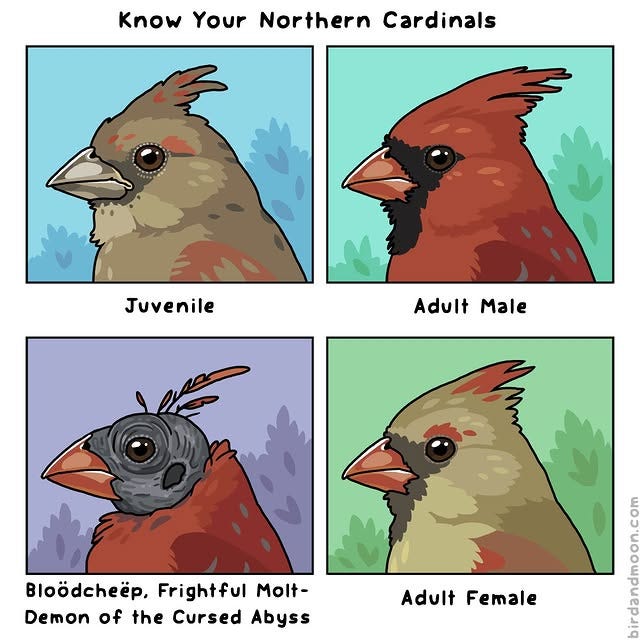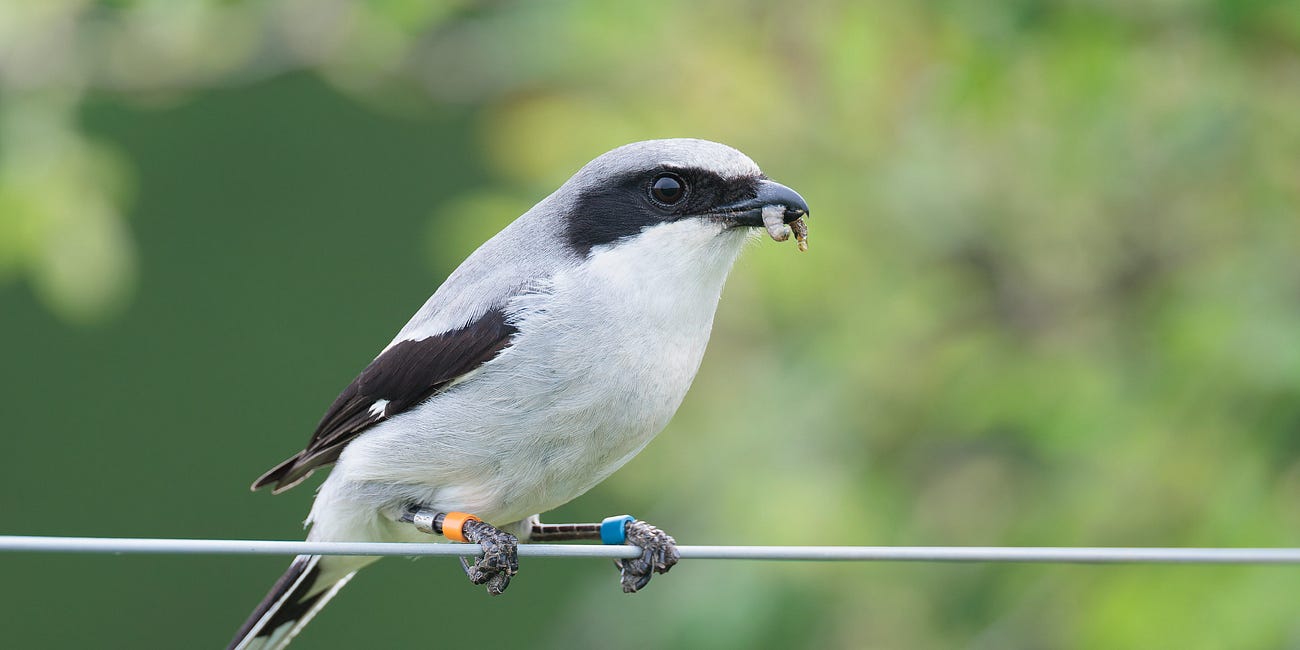A conversation with...Rosemary Mosco

Rosemary Mosco is an author and the creator of Bird and Moon, a nature comic that combines humor and art with science. For a glimpse into her work, check out this hilarious take on the murderous Northern Shrike. I had a chance to chat with her before her keynote appearance at The Urban Birding Festival here in Chicago next weekend.
BD: One of the reasons I love your work is that anyone, non-birder, beginner, or expert, could find humor in it. Do you think about that when sketching and writing or is the accessibility of it just a natural outcome?
RM: I’m glad to hear that. I do think a lot about accessibility. I try to make some obscure jokes that experts will enjoy, but I do my best to make everyone feel included so that nobody feels like birding and science are beyond their reach. This is a tricky needle to thread, and I don’t always get it right, but we need more people to feel like they can participate in, and understand, the natural sciences and trust the scientists who do the work.
BD: Your work would seem to be a counterpoint to competitive birding and austere science. But birds and a lot of nature are inherently funny, would you agree?
RM: Yes, birds and nature are so funny! I think that some people get worried when cartoonists treat serious subjects with humor—they fear we’re making light of important topics. But I hear from a lot of serious scientists who enjoy my lighthearted approach to their subjects and feel buoyed to keep doing their work. When times are bad, we could all use a laugh. That laughter can carry us through difficult times and keep us going while we take action.
BD: I was chuckling when I read A Guide to Turkey Lumps in The Birding Dictionary (Workman Publishing, 2025). Did bird books like Peterson, Kaufman, or Sibley influence you at all? Or are there non-bird influences?
RM: I love field guides. I have a huge collection of them—books on ants, bark, bees, skulls, even reptile tracks! I also love the satirical book A Field Guide to Little Known and Seldom Seen Birds of North America by Ben, Cathryn and John Sill. Other cartoonists inspire me too, including Crow Time, False Knees, Green Humour, and many more. My biggest influences, though, are the birds themselves. I find humor in every birding trip.
BD: You are also the author of A Pocket Guide to Pigeon Watching (Workman Publishing, 2021). Rock Pigeons have been in North America since the 1600s, and don’t really displace other birds the way House Sparrows or European Starlings do. It seems we should embrace them more. Thoughts?
RM: I agree. Rock Pigeons don’t appear to displace native birds because they only live where people do, and we’ve bred them to live in structures we’ve created. They’re far less of a threat than we’ve been led to believe. I think we should enjoy their presence as much as we can.
BD: My full-time job is at a research library so I was wondering what types of research (and sources) you’ve utilized in preparing for your projects.
RM: I always read many studies and books for each project. Scientific papers are my fuel. I also call experts when needed, and I’ve been lucky to work with experts one-on-one for some projects, including a comic about Rice’s Whales and one about rodenticides. I tend to over-research all of my projects, but research is a big part of the fun!
The Urban Birding Festival takes place September 12 through 14 here in Chicago. The registration table is in the lobby of the Peggy Notebaert Nature Museum, 2430 North Cannon Drive. Rosemary’s talk is on Saturday night at iO Theater and requires separate registration.
If you liked today’s post, you also might like this shrike content:
Humans at loggerheads with an endangered species (yet again)
Check out this quote from a Midwestern natural history account, about the development of a prairie. Would you say this was from 2023, 1983 or 1883?
If you like this post and would like to listen to a future post or follow me on Notes, download the Substack app. Available on iOS and Android.





Nice that you interviewed Rosemary. I look forward to meeting her (and buying her book) at the Urban Birding Festival this month. I will have a table there to promote my own book. Hope to see you at the fest!